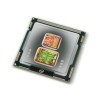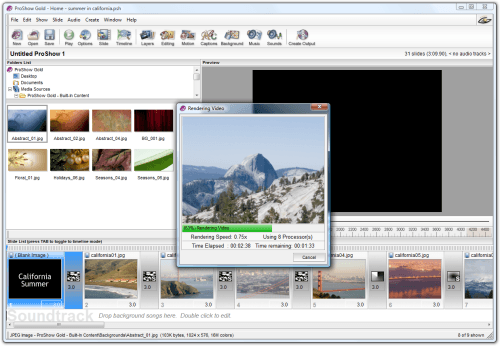- Qualcomm Launches Snapdragon 4 Gen 2 Mobile Platform
- AMD Launches Ryzen PRO 7000 Series Mobile & Desktop Platform
- Intel Launches Sleek Single-Slot Arc Pro A60 Workstation Graphics Card
- NVIDIA Announces Latest Ada Lovelace Additions: GeForce RTX 4060 Ti & RTX 4060
- Maxon Redshift With AMD Radeon GPU Rendering Support Now Available
Intel’s 32nm Clarkdale – Nehalem for Everyone

To help kick 2010 off right, Intel has filled out the rest of its current-gen processor line-up with the help of Westmere. We’re taking a look at the desktop variant here, which brings a lot to the table compared to the previous generation. For those who’ve been holding out for that next affordable PC upgrade, the wait has been worth it.
Page 12 – Multi-Media: ProShow Gold, Sandra Multi-Media
While TMPGEnc XPress’ purpose is to convert video formats, ProShow from Photodex helps turn your collection of photos into a fantastic-looking slide show. I can’t call myself a slide show buff, but this tool is unquestionably definitive. It offers many editing abilities and the ability to export in a variety of formats, including a standard video file, DVD video and even HD video.
Like TMPGEnc and many other video encoders, ProShow can take full advantage of a multi-core processor. It doesn’t support SSE4 however, but hopefully will in the future as it would improve encoding times considerably. Still, when a slide show application handles a multi-core processor effectively, it has to make you wonder why there is such a delay in seeing a wider-range of such applications on the marketplace.

In many of our tests up to this point, where we tested with two different scenarios, we have seen one scenario experience a larger boost than the other. Here, that’s not the case, as both our HD and DVD encodes saw close to a 34% boost in performance.
Sandra 2009 Multi-Media
This test here stresses the CPU’s ability to handle multi-media instructions and data, using both MMX and SSE2/3/4 as the instruction sets of choice. The results are divided by integer, floating point and double precision, three specific numbering formats used commonly in multi-media work.

Real-world tests are the absolute best way to gauge a processor’s worth, but synthetics play an important role as well, as we can easily see where a product excels, or lacks. This test is one good example of that, because we can see just how much the Core i5-661 excels for float computation compared to the others. It proves to be the first CPU in our entire line-up that sees float performance faster than int and double. Overall, the performance is quite good all-around, with stark increases between the CPU on the table and the older Core 2 E8600.
Support our efforts! With ad revenue at an all-time low for written websites, we're relying more than ever on reader support to help us continue putting so much effort into this type of content. You can support us by becoming a Patron, or by using our Amazon shopping affiliate links listed through our articles. Thanks for your support!






